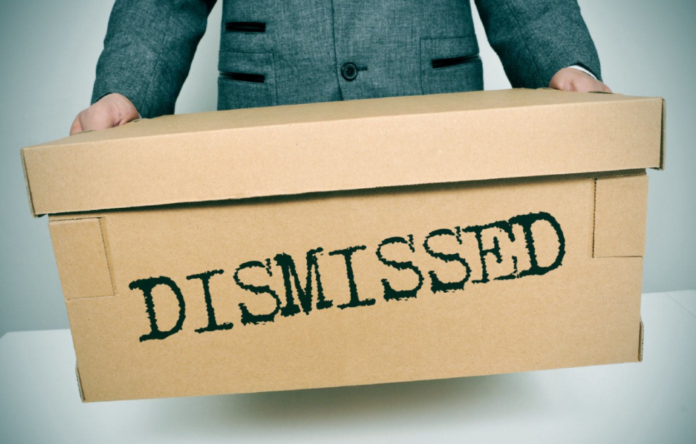
Although every worker wants to keep his job, there are times when he faces unfair dismissal. So, he was fired for no reason and this procedure is justified by law. In every state there is a termination of employment where the employer does not have to justify the dismissal. He does not state why he stopped using the services of the worker or his reasons cannot be substantiated.
However, the reasons for dismissal can be reduced to several different situations. It may be a technical, organizational or production cause. Equally often, the problem is discipline. Either way, if you are an employer you need to know all about this.
1. ‘Unfair Dismissal’ and ‘Wrongful Dismissal’

In order not to find yourself in a situation where every worker can blackmail you, ask for a raise or work less, it is important to know the difference between ‘unfair dismissal’ and ‘wrongful dismissal’. Many employees want to take advantage of employers thinking they are helpless. We consulted Levitt LLP, leading labor and employment law firm in Toronto, and found out unfair dismissal is when you fire a worker without first telling him the reason. Since this term is clear to you, let’s move on to another type of cancellation. Unlike unfair dismissal, wrongful dismissal is the dismissal of an employee for completely reasonable reasons. In that case, you did not follow all the procedures.
Fair reasons for dismissal include poor performance, inability to perform work, misconduct, technical redundancy, etc. We must note that the employees in this case can challenge the fairness of the dismissal. This happens when the employee does not think that his performance was bad or there is an explanation behind it, such as illness. Unfortunately, this whole procedure will have a direct connection with you, which means that you have to act carefully in order for your case to be strong enough.
2. A Fair Procedure for Firing Someone
If you want to follow fair procedures, it is important to have up-to-date employment contracts. It is also important that you adhere to the Advisory, Conciliation and Arbitration Service code. ACAS is also called disciplinary action, because it gives the employee a chance to change his behavior or warn him. In that case, you should follow the next few steps. First, look for reasons to fire the employee. Make sure these facts are true.
It would be good to gather all the evidence you can and only if you have legal access to it. It is also advisable to write a letter to the employee, as this will be an official notice of dismissal. By convening a meeting, you will give the employee the opportunity to defend himself or herself or show a desire for change. The letter you send to the employee must contain information on how to appeal your decision if necessary. So give the employee a chance to oppose your decision.
3. Complaint of Unfair Dismissal

To successfully perform this procedure, it is necessary for the employee to work for two years for you. However, there are a few exceptions. In that case, they can file a lawsuit against you. He is obliged to do this within 90 days from the termination of work. Many people will contact you in person before filing a lawsuit. They will try to challenge your dismissal and give you a chance to make things right. If you cannot reach a settlement, you can always contact the Employment Agency. Think of it as an opportunity to reach an agreement. Otherwise, you will probably end up in court and lose a lot of time and money.
A dissatisfied employee will open many questions through the employment court. The judge makes a decision based on the evidence provided by both parties. If the judge does not rule in your favor, you will have to pay compensation to the former employee. For this process you will need a lawyer who has experience in this field.
4. Hearing
If your case goes to a hearing, it will only be heard by a judge. Depending on the nature of the case, a panel hearing of three may take place. They appear when the case becomes complicated. When the verdict is passed, it is the final decision of the court, the final solution of your case. An appeal against the decision is possible only under certain circumstances. For example, an appeal is filed if the court erred in applying or understanding the law, which is a very rare occurrence.
5. Applicant for Unjust Dismissal

You can only unfairly fire an employee if you work as a federally regulated employer. For example, this applies to airlines, banks and railways. So, there is a list of industries that are allowed to lay off workers in this way. These are air transport, grain elevator, port services, marine shipping, radio and television broadcasting, etc. Industries that are not on the list cannot use this concept of layoffs. Instead, they have to give a reasonable explanation or pay instead.
6. Getting Back to Work
There are situations in which employees have returned to work. Returning to work is one type of appropriate remedy used. However, most cases end in law which proves inappropriate to return the employee to work. Cash compensation is also used if major problems have occurred. This is done only in exceptional circumstances.
7. Services
If you want to seek the help of experts in this field, you can choose from a variety of services. Each service includes issues related to termination clauses in employment contracts, human rights, employment standard and the like. It is an opportunity to learn all about the unfair dismissal of workers and get answers to complex questions about compensation, pensions, company shares and other business segments.
Conclusion:
Employers should be sure to obtain independent evidence and carefully assess the situation in which employees find themselves. It is also important to avoid assumptions and speculations, seek additional advice and assess the ability of employees. That way you will avoid any legal or other problems.








